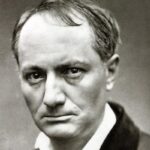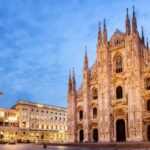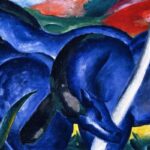We explain what realism is, its historical context and its characteristics. Also, art, literature and the authors of realism.
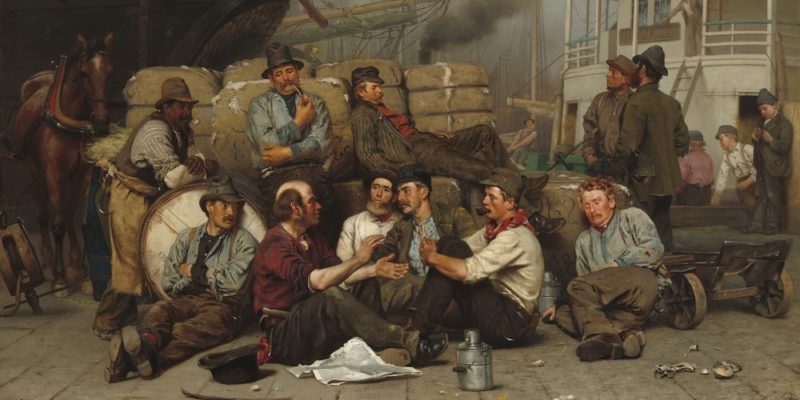
(John George Brown. The noon of the dockworkers1879)
What is realism?
Realism was an aesthetic movement that aspired to the most exact similarity or correlation possible between representation and reality. This trend valued the identification of the work of art with the real world and it manifested itself in painting, sculpture, literature and theater.
The realism It formally emerged in France in the 19th century as a reaction to the individual subjectivity of Romanticism. Instead, it was influenced by rationalism, positivism, and the tradition of the French Enlightenment, which privileged the human intellect and knowledge of reality over emotions and the subjective world.
However, the interest in representing reality as it is has been present in the artistic forms of almost all periods., since prehistory. This form usually opposes trends such as abstractionism or idealism.
Realism seeks to represent reality in the most plausible way possible, and prefers everyday situations over heroic idealizations as well as themes attached to the mundane and the common. In many ways, the search for objectivity of realism is considered a way of understanding and criticizing the social situations of a time.
- See also: Romanticism
Historical context of realism
The history of art has oscillated between realist tendencies and their idealist opposites. Romanticism (late 18th century to mid-19th century) was cultivated by German and English authors with its exotic, mythological, dreamlike and exalted themes, but later rejected by the Enlightenment French tradition.
This rejection of the enlightened progressively found its place as an aesthetic movement. Realism sought art in the daily life of human beings in the class conflicts of the time and in the social changes inspired by the French Revolution of 1789.
The emergence of journalism, the positivism of Auguste Comte (1798-1857) and the evolutionary theory of Charles Darwin (1809-1882) were important drivers of human reason and the progress of civilization through scientific advancement.
The realism It was much more than a mere aesthetic reaction: It was also a philosophy that expected from the intellectual and the artist a faithful portrait of their culture and their time and the addressing of hitherto ignored topics.
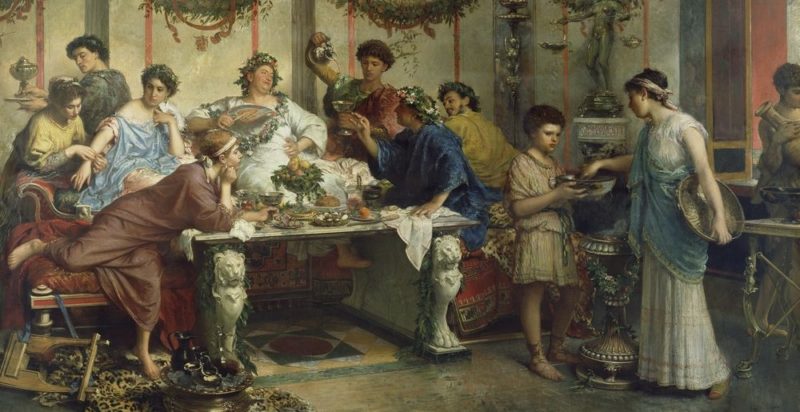

The term “realism” is used to designate two things at the same time:
1. The 19th century movement called realism
2. Art that aims to show reality “as it is”
Furthermore, historians place within realism authors who only took some elements of the movement, as is the case of Roberto Bompiani.
The work A Roman festival (The Parasite)by Bompiani presents elements of realism such as care for details, the use of light and color, verisimilitude, perspective and proportions. But at the same time it is an idealized scene of Ancient Rome, which distances the work from the realistic theme and brings it closer to neoclassicism. It also has elements of Romanticism, such as the nostalgic air and the evocative atmosphere.
Characteristics of realism
The human being as the center
Realism moved away from the mythological, religious, fantastic and dream themes typical of Romanticism, to focus on the experiences and realities of ordinary people and anonymous subjects.
Realist artists sought to engage with the problems of their time and sought to portray the dignity of everyday life even in its crudest aspects. They reflected poverty, inequality and social injustices in their works.
The search for objectivity and technical precision
Realist artists aspired to reproduce visible reality with fidelity and accuracy. The painting used techniques such as sfumato (or blurring), linear perspective and chiaroscuro (strong contrasts between light and shadow). Both paintings and sculptures tried to capture minute details of expressions, gestures, objects and scenarios.
In literature, realist authors used long, detailed descriptions to create a sense of immediacy and verisimilitude.
The crudeness and the social theme
Realism was characterized by an honest representation without idealizations, which highlighted the crudest and most problematic aspects of reality.
The artists represented poverty, misery, labor exploitation and social inequalities of the time in a critical and denouncing way, with the intention of promoting social changes.
Questioning the role of the artist
Realism was influenced by the ideas of the Industrial Revolution, the rise of social sciences, and the birth of new philosophies and political movements. This social and cultural context moved artists to take a more active social role and to bring the problems of his moment to his works.
This laid the foundations for the development of later artistic movements and marked a before and after in art and literature.
Plastic arts in realism
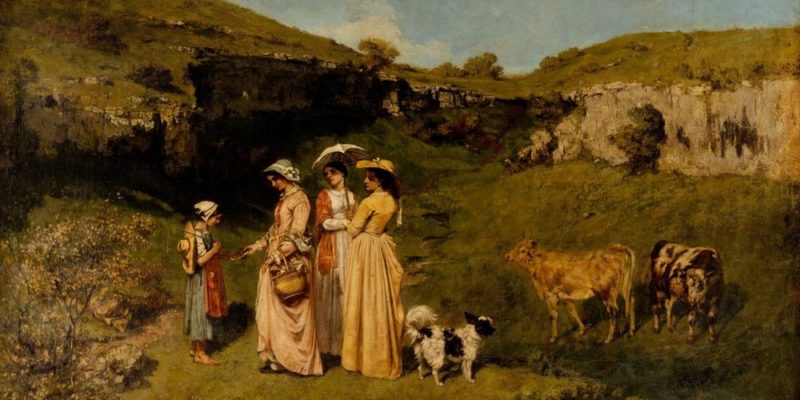
(Gustave Courbet Ladies of the village (Les Demoiselles de village)1852)
When realism became the prevailing school, photography made its first appearances. Therefore, some aspired to the accuracy, objectivity and level of detail that were beginning to become possible thanks to scientific innovations.
Moving away from the motifs of Romanticism, realist art focused on local issues and customs, which also coincided with the rise of numerous nationalist movements in 19th-century Europe.
The portrait was one of the most cultivated genres. The artists tried to reflect both the physical appearance and the personality of their models. Other important genres were genre painting, which depicted scenes from everyday life, and historical painting, which recreated events from the past in great detail.
The search for objectivity that characterized realist painting intensified in naturalism and laid the foundations for the later emergence of impressionism.
literary realism
literary realism aimed at less idealistic and more truthful writing models than previous movements. Realist authors sought to move away from subjectivity to commit to observing the world around them, in its social, economic and political circumstances. It was hoped that a writer would study society just as a doctor would study the human body.
As for the forms, the realism favored the simple, direct, sober style identified with the everyday speech of people. Long and detailed descriptions of objects, environments and characters were made. This resulted in long paragraphs with many subordinate clauses and language without many turns or singularities. What was important was not the creative will of the author, but the reality described.
in the narrative the omniscient narrator was preferred that is, the one who narrates in the third person with full knowledge of what happens in the story. This narrator explains every last detail of what happens and instructs the reader in the social and economic issues involved in the story.
This also led to the appearance of archetypal or stereotypical characters (that is, characters that appear in several stories with similar behaviors, such as “the confidant” or “the mentor”), so recurrent that they ended up being repetitive.
- Literary realism
Authors and representatives of realism
Some important representatives of this trend in the various artistic disciplines were:
Representatives of realism in painting
- Gustave Courbet (1819-1877). He was a French painter, pioneer of realism. He portrayed nature and everyday life in a crude way. Among his famous works are Burial in Ornans (1850) and The origin of the world (1866).
- Jean-Francois Millet (1814-1875). He was a French painter of peasant origin. He stood out for his scenes of rural life with deep realism and social sensitivity. Among his famous works are The Angelus (1859) and The gleaners (1857). He is considered a precursor of impressionism.
- Thomas Couture (1815-1879). He was an art teacher and large-format painter, the greatest exponent of French academicism. Among his famous works are The Romans of decadence (1851-1888) and The thirst for gold (1844).
- Jules Breton (1827-1906). He was a French painter, a follower of realism. She was noted for her idealized depictions of peasant life, especially women. Among his famous works are The song of the lark (1884) and The withdrawal of the gleaners (1859).
Representatives of realism in sculpture
- Auguste Rodin (1840-1917). He was a French sculptor, considered a bridge between realism and modernism and one of the fathers of modern sculpture. He was noted for his monumental and realistic works, which explored movement and human anatomy. Among his famous works are The thinker (1882) and The kiss (1889).
- Honoré Daumier (1808-1879). He was a French sculptor and caricaturist. He was noted for his satirical sculptures that criticized the society and politics of his time. Among his famous works are The third class car (1862) and The fighter (1852).
- Constantin Meunier (1831-1905). He was a Belgian sculptor, considered one of the main exponents of social realism. He was noted for his depictions of the working class, often in scenes of work or suffering. Among his best-known works are Village woman (1886) and The firedamp (1888-1890).
- Medardo Rosso (1858-1928). He was an Italian sculptor, noted for his works in wax and bronze, which explored texture and light in innovative ways. Among his famous works are Jewish boy (1892) and Aetas Aurea (1886).
Representatives of realism in literature
- Honore de Balzac (1799-1850). He was a French novelist, considered one of the fathers of realism. He was noted for his monumental work The Human Comedya series of novels that portray the French society of its time with a great wealth of characters and details. Other of his famous works are Papa Goriot (1835) and Eugenia Grandet (1833).
- Leo Tolstoy (1828-1910). He was a Russian novelist, considered one of the greatest in history. He was noted for his epic novels that portrayed the social and political life of 19th century Russia. Some of his most famous works are: War and peace (1867) and Anna Karenina (1873).
- Stendhal (Henri Beyle, 1783-1842). He was a French novelist and one of the precursors of realism. He was noted for his psychological novels that explore the complexity of the human soul. Some of his most famous works are red and black (1839) and The Charterhouse of Parma (1839).
- Gustave Flaubert (1821-1880). He was a French writer and is considered one of the greatest novelists in history. He stood out for his impersonal style, which sought to describe reality with the greatest possible precision. Some of his most famous works are Madame Bovary (1857) and sentimental education (1869).
- Fyodor Dostoevsky (1821-1881). He was a Russian writer and one of the greatest novelists in history. He was noted for his psychological novels that explored the human spirit, often in contexts of suffering and despair. Some of his most famous works are Crime and punishment (1866-1867) and The Karamazov brothers (1879-1880).
- Charles Dickens (1812-1870). He was an English novelist and one of the great writers of the Victorian era. He was noted for his social novels that criticized poverty and inequality. Some of his most famous works are Christmas song (1843) and Great hopes (1861).
- Benito Pérez Galdós (1843-1920). He was a Spanish novelist, playwright and chronicler, considered one of the fathers of Spanish realism. He stood out for his National Episodesa series of 46 novels that narrate the history of Spain from the War of Independence to the Restoration. Other of his famous works are Mrs. Perfect (1876) and Fortunata and Jacinta (1887).
magical realism
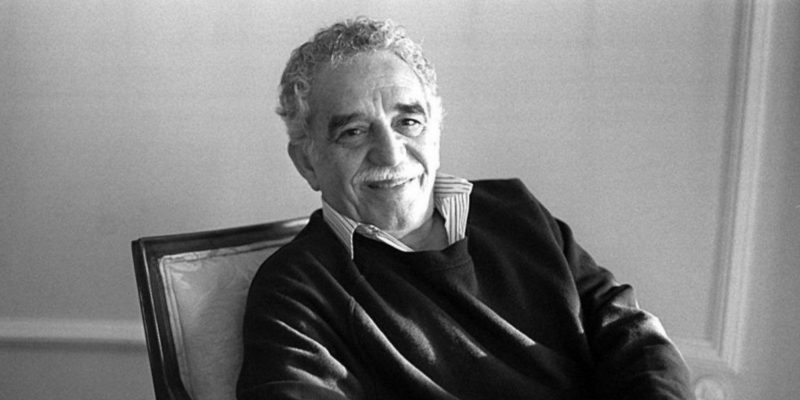
magical realism is a Hispanic American literary school of the 20th century whose main exponent is the Colombian author Gabriel García Márquez (1927-2014), winner of the Nobel Prize in Literature. This trend is committed to the realistic representation of strange and wonderful events, which do not generate astonishment in the fictional universe of the work. In other words, it treats fantastic events as something everyday and common.
This aspect of realism It also entails a political stance towards the reality of the Latin American peoples which was initially formulated by the Cuban Alejo Carpentier (who called it “marvelous realism”) and the Venezuelan Arturo Úslar Pietri (already as “magical realism”). According to this political position, the Latin American continent plays the role of a reservoir of magic and the exotic within a rationalist and scientistic Western Hemisphere.
- magical realism
- Neoclassicism
- Romanticism
References
- Larousse. (2016). Realism. Encyclopédie. https://www.larousse.fr/encyclopedie/
- Santi, P. (1969). Bompiani, Roberto. Biographical Dizionario degli Italiani. Treccani. https://www.treccani.it/enciclopedia/
- Souriau, É. (1998). Dictionary Akal of ANDaesthetic. Akal.



